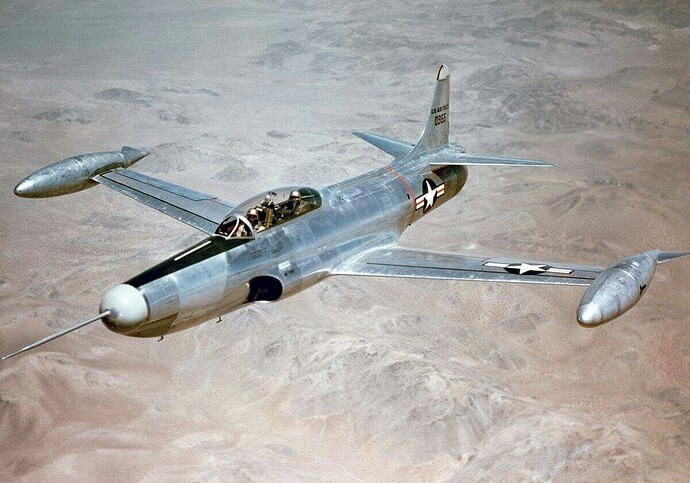May 26, 1952 — North Korea
3:20 a.m. Ground radar alerts the crew of an F-94 Starfire interceptor jet over North Korea that an unidentified target is on its tail. The jet turns, descends to 2,500 feet, and both the pilot, 1Lt John W. Martin, and radar operator, 1Lt. Edward A. Monard, see a brilliant white light above and straight ahead. They make one pass within 600 feet of the object, but due to its brilliance they cannot identify its shape. The pilot makes six more close passes, but still cannot identify it. Their aircraft radar does not pick up the object. After the last pass, the radar operator briefly thinks he sees something following them, and ground radar tells them there is an unknown target on their tail. The pilot banks to the right to get behind the target, and this time the aircraft radar locks onto the object, which is ahead of them. In less than a minute, the F-94 is within 3.4 miles of the target. The UFO then performs a steady climbing turn and accelerates away reaching a distance of nearly 15 miles from the jet in 12–15 seconds, breaking radar contact. Robert Powell estimates that the object is speeding away at 5,371 mph and sustaining 16.7 g-forces, which is roughly what USAF Brig. Gen. Charles Y. Banfill estimates shortly after the incident. [Eberhart]
Source:
Brad Sparks, Blue Books Unknowns Catalogue, Case 594, p. 135;
Richard Haines, ADVANCED AERIAL DEVICES reported DURING THE KOREAN WAR, pp. 40–44;
Robert Powell, UFOs: A Scientist Explains What We Know (And Don’t Know), 2024, pp. 70–72;
NICAP, “F-94 Has UFO on Its Tail, Radar Tracks”;










